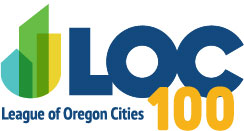LOC News
Local Government Coalition Working on CRF Distribution Framework
The LOC, the Association of Oregon Counties (AOC) and the Special Districts Association of Oregon (SDAO) started work this week as a local government coalition tasked with building on initial concepts for the distribution of Coronavirus Relief Funds (CRF). Last week's Bulletin article on the subject discussed the first reimbursement period carried out by the state of Oregon.
The LOC’s focus, along with its coalition partners, is to develop and advance a framework similar to a distribution model and that will effectively get funding to all cities that have not received a direct allocation from the CRF. Numerous challenges must still be worked out in the wake of the governor’s office and the state’s presiding officers presenting their initial plan for distributing CRF. The LOC has opposed the concept of forcing Multnomah and Washington counties, along with the city of Portland, to redistribute their funds to the other cities and special districts inside those counties. It is the League’s position that the U.S. Congress has been very clear: the purpose of the direct federal funding was to provide additional resources for those communities with a population greater than 500,000, because of the unique challenges they would face. Based on media reports and other communications, Multnomah County, Washington County and the city of Portland have yet to prepare a distribution plan. They are reportedly very concerned that the funds they received will not be sufficient to cover their own responses, let alone be sufficient for an additional distribution out to the 23 other cities in those counties.
The LOC and its coalition partners will develop a plan and present a framework to state leaders by June 5. At that point, we will have more details to share. The most significant element we are advancing is the need for additional funds to local governments. The CARES Act and eventual CRF funds established guidance for states to share 45% of the state’s CRF distribution from the federal government. Clarity for this guidance was added yesterday. It updates the language, changing a “recommendation” to share to “should” share. We believe this strengthens the coalition’s position advocating for CRF funds. Additional guidance is now calculating the 45% share independent from the direct CRF distributions to entities with a population greater than 500,000. As a result, the additional funds for distribution from the state are more than $600 million to cities, counties and special districts.
The framework will be critical. Currently, the system being used is a reimbursement process, meaning a local government first has to spend the money and then submit a reimbursement request. This design prevents the vast majority of Oregon’s cities from participating, because they don’t have excess funds to spare. By moving to a distribution model where cities and counties will split the funding pool, each city would receive a per-capita distribution based on population. In addition, it will be critical to ensure cities have the ability to make their own determinations as to how to spend the money in their communities, and also make sure the full range of eligible expenses under Treasury guidance is available.
Contact: Jim McCauley, Legislative Director - jmccauley@orcities.org
Last Updated 5/29/20
Related Resources
- CRF Reimbursements Underway; Deadline Extended to May 29 LOC Bulletin (May 22, 2020)
- Coronavirus City Resource Center

